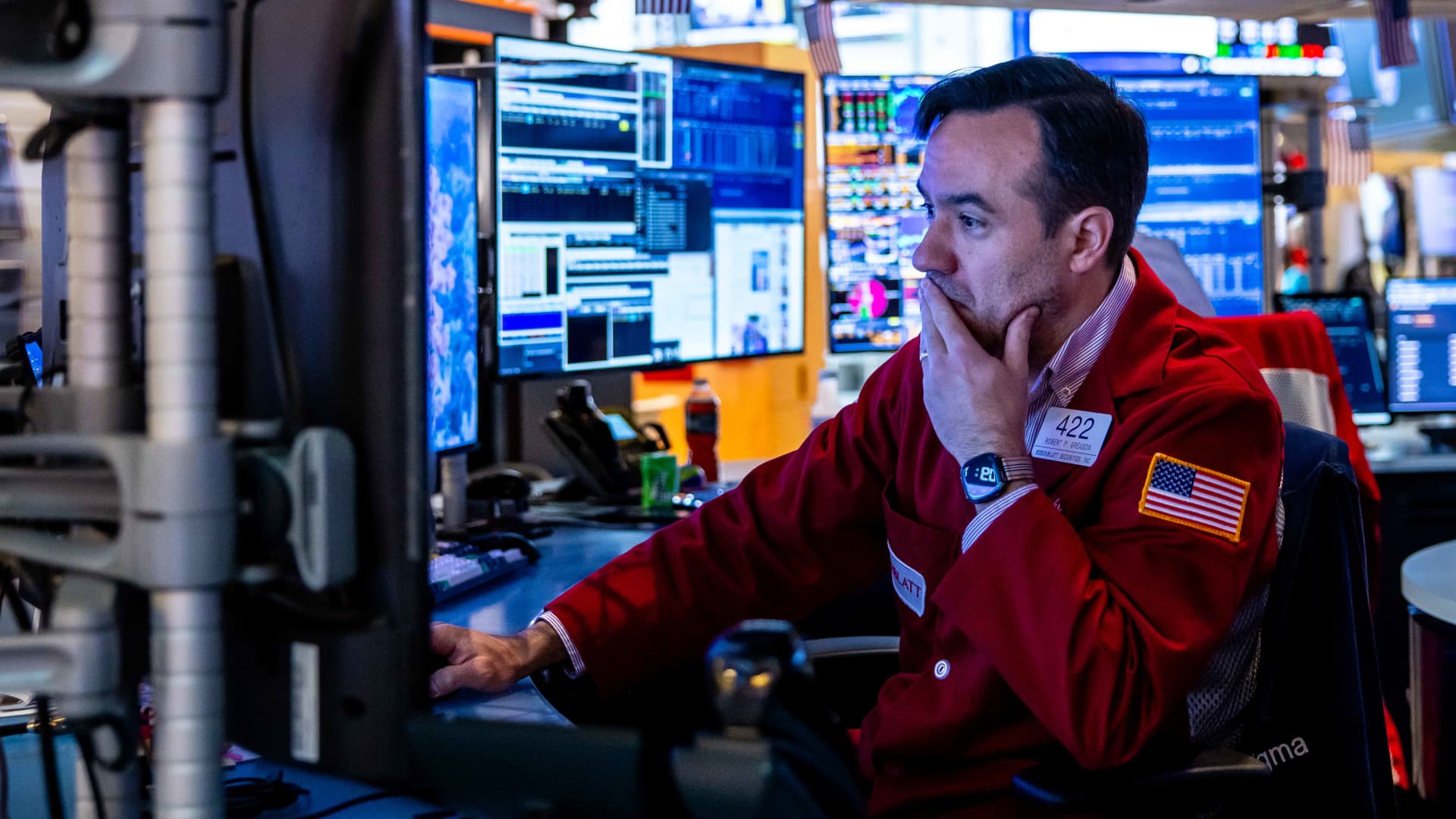A trader works on the floor of the New York Stock Exchange.
NYSE
U.S. stocks retreated on Thursday as names in the artificial intelligence trade came under pressure yet again amid worries around eye-watering valuations.
The Dow Jones Industrial Average slipped 439 points, or 0.9%. The S&P 500 traded down by 1.1%, while the Nasdaq Composite shed 1.8%.
AI stocks remained in focus for those on Wall Street during the session. Qualcomm shed 4%, even after the chipmaker posted better-than-expected quarterly results. Advanced Micro Devices, a standout name in the prior day, declined 7%, while Palantir Technologies and Oracle dipped 5% and 3%, respectively. Shares of AI darling Nvidia and fellow “Magnificent Seven” name Meta Platforms slid as well.
“So much of this stuff from a valuation standpoint was so lofty and priced for perfection that we’re seeing in the market a bit of a dichotomy between companies that are are beating and raising versus those that maybe are beating on the top line but providing tepid guidance on the bottom line or from an operating profit standpoint,” said Mike Mussio, president at FBB Capital Partners. “That’s the difference between some of these companies on earnings being up double digits versus being down double digits, and there’s not a lot of in-between.”
Equities linked to the AI space rebounded on Wednesday from valuation concerns that swirled earlier this week, serving as a potential boon for the major indexes. AMD closed more than 2% higher in the previous session after the semiconductor company reported better-than-expected third-quarter results. The performance pulled up some other AI stocks alongside it, including Broadcom and Micron Technology. Oracle also recouped some recent losses.
While the recovery of the AI names helped the market bounce back a bit following a soft start to the weekly period, all three major U.S. indexes are still firmly in the red week to date.
Thursday’s pullback was exacerbated by concerns about the state of the labor market, as October saw a significant number of layoff announcements. Job cuts for the month totaled 153,074, marking an increase of 183% from September and 175% from the year-ago period, according to Challenger, Gray & Christmas. That’s the highest level recorded for an October in 22 years. Not only that, 2025 is the worst year for layoffs since 2009.
That data paints a shaky picture of the U.S. economy, particularly in light of the lack of data releases with the ongoing U.S. government shutdown. The stoppage, now in its 37th day, has become the longest in the country’s history.
“We’re starting to get dribs and drabs of the economic data … that’s not government related, and it’s not super rosy,” Mussio said, adding that “all that stuff is just setting up for some for some market weakness.” Though that doesn’t necessarily mean “this is the start of a major skid or anything,” he believes that if the government reopens and the data thereafter shows the consumer is “really not dead” as the holiday season unfolds, that “typical” year-end rally could “continue.”
Investors were also looking at Washington, as the Supreme Court heard arguments over the legality of the Trump administration’s tariffs. They increasingly expect the Supreme Court to rule against the Trump administration’s aggressive trade policy after high court justices on Wednesday expressed some skepticism about the trade taxes’ legality.
The potential ruling would trigger a rollback of the president’s tariffs, likely pushing stocks higher.
